📞+86 153 7530 2641 📧 hongjing.Wang@feichuncables.com
LSZH Cable: Definition, Properties, and Its Growing Demand in Global Port Applications
Discover the key features, benefits, and global demand for LSZH (Low Smoke Zero Halogen) cables in port environments. Learn how LSZH enhances fire safety, meets international standards, and supports smart, green port development in countries like Singapore, Germany, Australia, and more.
hongjing.Wang@Feichun
7/4/20258 min read
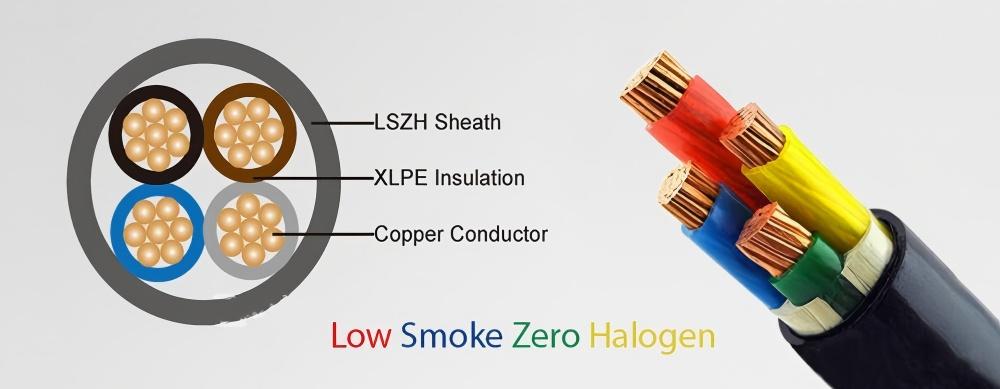

Introduction
Fire safety in electrical cable systems is a critical concern, particularly in environments where a fire could lead to catastrophic consequences for human life, infrastructure, and operations. Traditional cables, such as those made with polyvinyl chloride (PVC), release dense black smoke and toxic halogen gases when exposed to fire, posing significant risks to health, visibility, and equipment. These dangers have fueled the rising demand for Low Smoke Zero Halogen (LSZH) cables, which are engineered to minimize smoke and eliminate toxic gas emissions during combustion. Ports, as high-risk and safety-critical environments, are increasingly adopting LSZH cables to enhance safety and comply with stringent regulations. With enclosed spaces, high personnel density, and critical infrastructure, ports require cable solutions that prioritize safety without compromising performance. This article explores the definition, properties, advantages, and growing demand for LSZH cables in global port applications, addressing their role in shaping safer and more sustainable port operations.
What Is LSZH Cable?
LSZH stands for Low Smoke Zero Halogen, a category of cables designed to produce minimal smoke and no halogen gases when exposed to fire. Unlike traditional PVC cables, which contain halogens like chlorine, bromine, or fluorine, LSZH cables are made from halogen-free materials that do not release toxic or corrosive gases during combustion. This makes them a safer choice for environments where fire risks could endanger lives or damage sensitive equipment.
LSZH cables are governed by international standards to ensure their safety and performance. Key standards include:
IEC 60754: Tests for the absence of halogen acid gas emissions.
IEC 61034: Measures smoke density to ensure low smoke production.
BS EN 50267: Specifies requirements for halogen-free, flame-retardant cables.
These standards ensure that LSZH cables meet rigorous safety criteria, making them suitable for high-risk environments like ports, public buildings, and transportation systems. The development of LSZH cables, pioneered by innovations such as those patented by Raychem Corporation in 1979, has revolutionized fire safety in cable technology.
Key Features and Advantages
LSZH cables offer a range of features that make them indispensable in safety-critical applications:
Low Smoke Emission: In a fire, LSZH cables produce significantly less smoke than traditional cables, improving visibility and facilitating safer evacuation. This is particularly crucial in enclosed spaces where smoke can quickly accumulate.
No Halogen Gas Release: By eliminating halogens, LSZH cables avoid releasing toxic and corrosive gases, reducing health risks to personnel and preventing damage to sensitive equipment.
Fire Retardant and Self-Extinguishing: Many LSZH cables are designed with fire-retardant properties, helping to contain fires and prevent their spread.
Environmentally Friendly: Made from recyclable materials and free of harmful substances like lead and cadmium, LSZH cables align with global sustainability goals.
High Insulation and Mechanical Integrity: Despite their safety enhancements, LSZH cables maintain excellent electrical and mechanical properties, ensuring reliable performance in demanding environments.
These advantages make LSZH cables a preferred choice in environments where fire safety, human health, and environmental sustainability are priorities, such as port facilities.
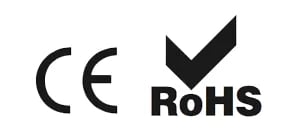

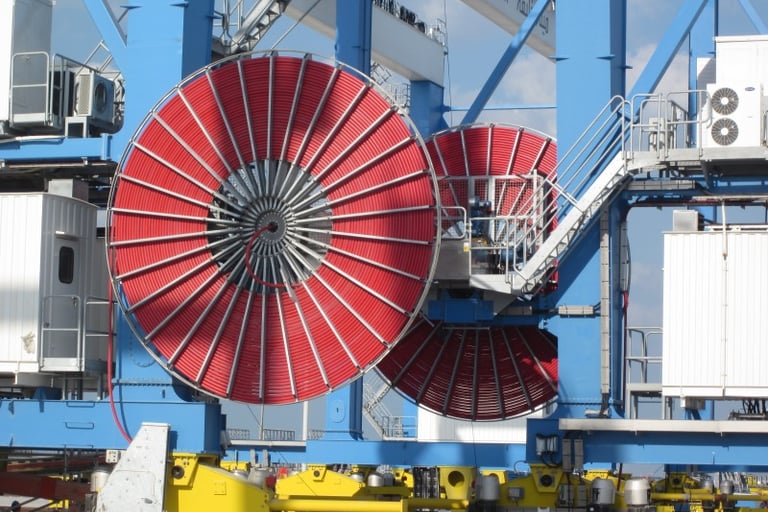

Material Composition and Structure
LSZH cables are engineered with specific materials to achieve their unique safety and performance characteristics:
Core Conductor: Typically made of stranded copper, which provides high conductivity and flexibility for various applications.
Insulation: Cross-linked polyolefin (XLPO) or other halogen-free materials offer excellent electrical insulation while maintaining safety properties.
Filler and Sheath: Halogen-free flame-retardant compounds are used to enhance fire resistance and reduce smoke emission.
Additives: Common additives include aluminum hydroxide (ATH) and magnesium hydroxide (MDH), which undergo endothermic reactions during a fire to absorb heat and release steam, suppressing flames and smoke.
Compared to other cable types, such as PVC, rubber, or polyurethane (PUR), LSZH cables provide superior safety profiles. For instance, PVC cables release toxic hydrogen chloride (HCl) gas when burned, while rubber cables may vary in toxicity depending on their composition. LSZH cables, by contrast, offer a safer and more environmentally friendly alternative without compromising performance.
LSZH Cable vs PVC Cable – A Comparison Table
To highlight the differences between LSZH and traditional PVC cables, the following table compares key characteristics:

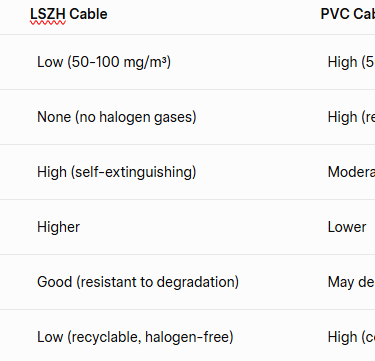
This comparison underscores the safety and environmental advantages of LSZH cables, particularly in high-risk settings like ports.
Where Are LSZH Cables Most Needed in Port Environments?
Ports are complex, high-risk environments with numerous areas where fire safety is paramount. LSZH cables are particularly essential in the following applications:
Enclosed Terminal Control Rooms: These areas house critical electrical systems and personnel, making low smoke and non-toxic cables vital for safety.
Crane Operator Cabins: Used in Ship-to-Shore (STS), Rubber-Tired Gantry (RTG), and Rail-Mounted Gantry (RMG) cranes, LSZH cables ensure operator safety in confined spaces.
Port Surveillance and Fire Alarm Systems: LSZH cables support reliable operation of critical safety systems, enabling early detection and response to emergencies.
Automated Container Yards and AGVs: Automated Guided Vehicles (AGVs) and other automated systems rely on LSZH cables for safe and efficient electrical connectivity.
Shore Power (Cold Ironing) Systems: These systems provide power to ships while docked, reducing emissions and requiring safe, reliable cables.
Underground or Cable Trench Installations: Limited ventilation in these areas heightens fire risks, making LSZH cables a critical choice.
By reducing smoke and toxic gas emissions, LSZH cables enhance safety and protect both personnel and equipment in these critical port applications.
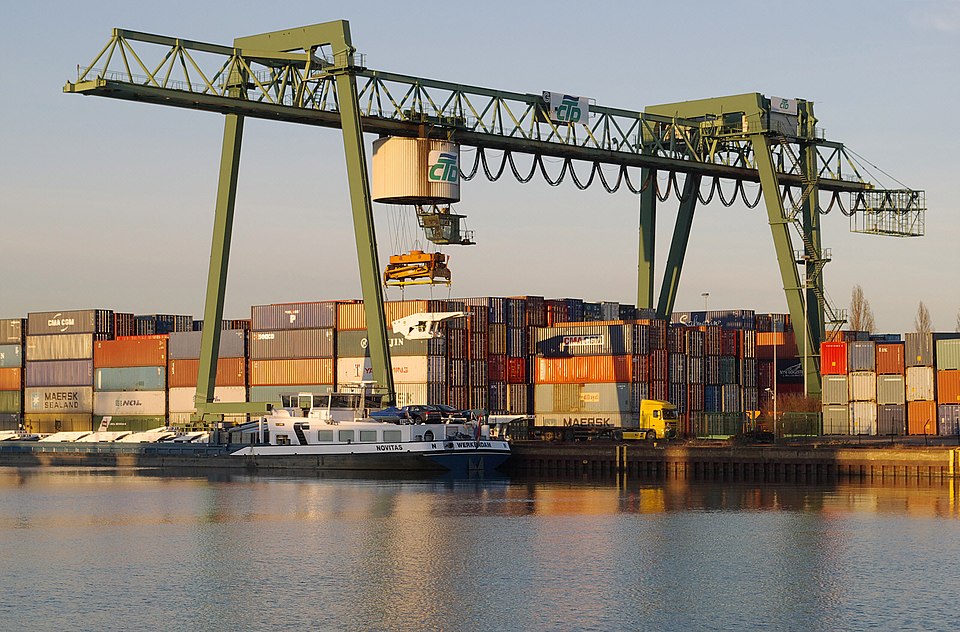

Countries and Ports with High LSZH Adoption
The adoption of LSZH cables in ports is driven by regulatory requirements, safety initiatives, and sustainability goals. Several countries and ports are leading the way:
Europe (Germany, Netherlands, France): Strict regulations, such as the EU’s Construction Product Regulation (CPR), mandate the use of LSZH cables in public and industrial settings, including ports.
United Kingdom (London Gateway, Felixstowe): Compliance with British and IEC safety standards drives widespread LSZH adoption in port infrastructure.
Singapore (PSA): As part of its smart green port strategy, Singapore’s Port Authority (PSA) uses LSZH cables to enhance safety and sustainability.
Japan and South Korea: Post-disaster regulations emphasize fire safety, leading to increased use of LSZH cables in port facilities.
Australia (Fremantle, Kwinana, Brisbane): Environmental and safety standards prioritize LSZH cables in port applications.
China (Yangshan, Qingdao): LSZH cables are used in centralized control and automation zones to improve safety in large-scale port operations.
These examples reflect a global trend toward adopting LSZH cables as a standard for enhancing safety and sustainability in port infrastructure.
Limitations and Considerations
While LSZH cables offer significant advantages, they also have some limitations that must be considered:
Cost: LSZH cables are generally more expensive than traditional cables due to the advanced materials and additional manufacturing steps required. However, costs are expected to decrease as demand and production scale increase.
Mechanical Strength: LSZH cables may have reduced flexibility and mechanical strength in certain applications, particularly in long-reeling systems used in ports.
Suitability for Dynamic Applications: In high-flex or dynamic applications, such as those involving frequent cable movement, LSZH cables may not perform as well as other materials like PUR.
Temperature Range: While LSZH cables perform well in many conditions, their performance in extreme high or low temperatures may vary compared to some traditional cables.
Despite these limitations, the safety and environmental benefits of LSZH cables often outweigh the drawbacks, particularly in high-risk environments like ports.
Typical LSZH Cable Product Types for Ports
LSZH cables are available in various forms tailored to specific port applications:
LSZH Control Cable for Crane Systems: Designed for reliable operation in heavy-duty environments, these cables support crane operations in STS, RTG, and RMG systems.
Hybrid Power + Fiber LSZH Cable: Combines power and data transmission in a single cable, reducing installation complexity and enhancing safety in automated port systems.
Shore-to-Ship Power Cables (H07BZ5-F, TFOU LSZH): Facilitate cold ironing, providing safe and efficient power to ships while docked, reducing emissions.
Fire Alarm and Emergency Communication LSZH Cables: Ensure critical systems remain operational during emergencies, supporting port safety protocols.
These product types demonstrate the versatility of LSZH cables in addressing the diverse needs of port operations.
Case Study: LSZH Cables in Singapore’s PSA Port
Singapore’s Port Authority (PSA) is a global leader in port operations, known for its advanced and sustainable infrastructure. As part of its smart green port strategy, PSA has implemented LSZH cables across its facilities, particularly in the Tuas Port, which is set to become the world’s largest automated terminal. LSZH cables are used in control rooms, crane systems, and automated yard equipment, significantly enhancing fire safety. In the event of a fire, these cables minimize smoke and toxic gas emissions, protecting personnel and critical equipment. Additionally, PSA’s commitment to environmental sustainability aligns with the eco-friendly properties of LSZH cables, which are recyclable and free of harmful halogens. This case study highlights the practical benefits of LSZH cables in a leading port environment.


Regulatory Insight: EU Construction Product Regulation (CPR)
The European Union’s Construction Product Regulation (CPR) sets stringent standards for construction materials, including cables, to ensure fire safety. Under the CPR, cables must meet specific requirements for smoke emission, acidity, and fire propagation. LSZH cables, with their low smoke and zero halogen properties, easily comply with these regulations, making them a preferred choice for construction projects, including port infrastructure, across EU member states. The CPR’s emphasis on safety and environmental performance is driving the adoption of LSZH cables in European ports, ensuring compliance and enhancing safety.
Smoke Density and Toxic Gas Comparison
A comparative analysis of smoke density and toxic gas emissions highlights the advantages of LSZH cables:

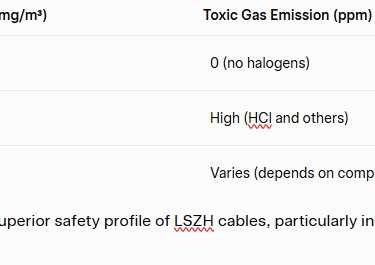
Common Questions and Answers about LSZH Cables
What does LSZH stand for?
LSZH stands for Low Smoke Zero Halogen, indicating cables that produce minimal smoke and no halogen gases when exposed to fire.Why are LSZH cables preferred in ports?
Ports have high-risk environments with enclosed spaces and critical infrastructure. LSZH cables reduce smoke and toxic gas emissions, improving safety during fires.Are LSZH cables more expensive than traditional cables?
Yes, LSZH cables are generally more expensive due to advanced materials and manufacturing processes, but costs are expected to decrease with increased adoption.Can LSZH cables be used outdoors?
Yes, LSZH cables are suitable for outdoor use in harsh environments, but their performance should be verified for specific conditions, such as extreme temperatures.What are the environmental benefits of LSZH cables?
LSZH cables are made from halogen-free, recyclable materials, reducing environmental impact compared to traditional cables containing harmful substances.
Future Market Outlook
The future market for LSZH cables in port applications appears promising, driven by several key trends:
Regulatory Push: Stricter fire safety and environmental regulations in regions like Europe, Asia, and Australia are increasing demand for LSZH cables.
Smart and Green Ports: The global shift toward smart and sustainable port operations, as seen in Singapore’s PSA and China’s Yangshan port, is driving the adoption of eco-friendly and safe cable solutions.
Technological Advancements: Ongoing improvements in LSZH cable manufacturing are reducing costs and enhancing performance, making them more competitive with traditional cables.
Global Infrastructure Investments: As ports worldwide upgrade their infrastructure to support automation and sustainability, LSZH cables are becoming a preferred choice for new installations.
While challenges such as higher costs and application-specific limitations remain, the safety and environmental benefits of LSZH cables position them as a critical component of modern port infrastructure. Early adoption and compliance with safety regulations will be key for ports to enhance their safety and sustainability profiles.
Conclusion
LSZH cables are not a one-size-fits-all solution, but they are indispensable in enclosed, personnel-dense, and fire-risk areas such as ports. Their ability to minimize smoke and eliminate toxic gas emissions makes them a vital choice for ensuring safety in critical environments. With the global trend toward smart and green port development, LSZH cables are poised to become a standard in port infrastructure. Ports that invest in LSZH cables early will benefit from enhanced safety, regulatory compliance, and alignment with sustainability goals, positioning them as leaders in the future of port operations.
How to Reach Us
Get in Touch
SiteMap
Product Catalogue
Festoon Cable
Shore Power Cable




Scan to add us on WeChat
